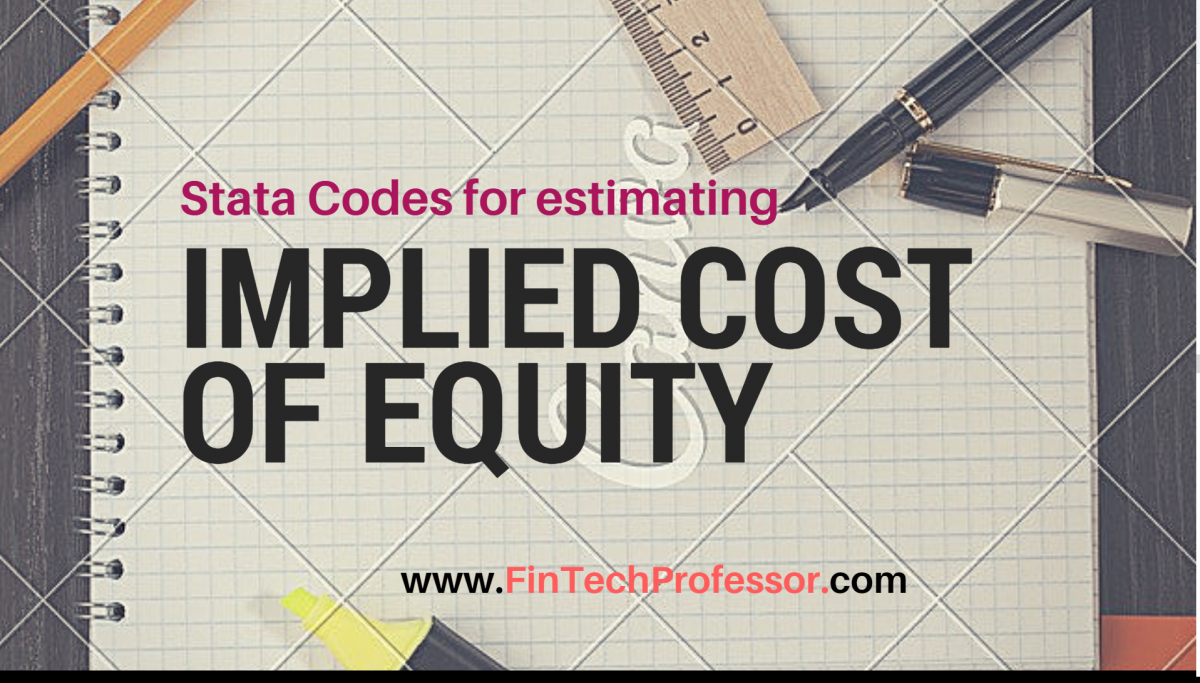Estimation of implied cost of equity models requires solving for unknowns. Usually, the models have lengthy equations and unknowns that call for deep root functions. There are five well-known models to find implied cost of equity. These models are listed below:
- Gebhardt et al. (2001),
- Claus and Thomas (2001),
- Ohlson and Juettner-Nauroth (2005),
- Easton (2004), and
- Gordon and Gordon (1997)
With the exception of Gordon and Gorden (1997) model, all other models require complex algebra to solve for the unknown i.e. the required rate of return. The good news is that we have developed an efficient and fast solution for all these models. We use the Mata capability of Stata Software to solve for the unknowns.
Furthermore, we also have developed Stata codes to find forecasted earnings using recently developed models such as Hou et al. (2012). Almost all implied cost of equity models use forecasted earnings. Therefore, the two set of codes compliment each other.
Accuracy of the codes
The ICC codes have a history of around 2 years and during this time period, these codes were purchased not only by students but also by faculty members. These codes have been tested extensively by various researchers. The good thing is that some of the models can be tested for accuracy using Excel Solver function. We also provide a dummy dataset that can be used to easily implement the codes and see the results, which can then be verified using any tool such Excel, calculators, or codes written in other software e.. SAS, R, MATLAB.
Pricing
The code is available for $100 per ICC model, plus a $50 for raw data processing (in case the data is not in Stata format and variables are not already constructed). The code to forecast earning using the Hou et al. (201) model is available for a fee of $75.
Payment Options
| Gebhardt et al. (2001) or GLS Model | |
| Easton (2004) | |
| Claus and Thomas (2001) | |
| Ohlson and Juettner-Nauroth (2005) | |
| Gordon and Gordon (1997) |
For further details, please contact us at:
![]() attaullah.shah@imsciences.edu.pk
attaullah.shah@imsciences.edu.pk
Stata.Professor@gmail.com
References
- Claus, J., Thomas, J., 2001. Equity premia as low as three percent? Evidence from analysts’ earnings forecasts for domestic and international stock markets. Journal of Finance 56, 1629–1666.
- Easton, P., 2004. PE ratios, PEG ratios, and estimating the implied expected rate of return on equity capital. The Accounting Review 79, 73–95.
- Gebhardt, W., Lee, C.M., Swaminathan, B., 2001. Toward an implied cost of capital. Journal of Accounting Research 39, 135–176.
- Gordon, J., Gordon, M., 1997. The finite horizon expected return model. Financial Analysts Journal (May/June), 52–61.
- Hou, K., Van Dijk, M.A. and Zhang, Y., 2012. The implied cost of capital: A new approach. Journal of Accounting and Economics, 53(3), pp.504-526.
- Ohlson, J., Juettner-Nauroth, B., 2005. Expected EPS and EPS growth as determinants of value. Review of Accounting Studies 10, 349–365.

